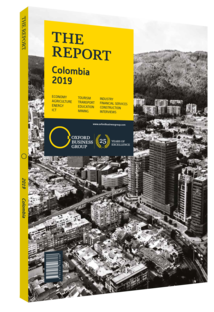Astrid Álvarez Hernández, CEO, Grupo Energía Bogotá (GEB): Interview

Interview: Astrid Álvarez Hernández
In which areas of energy transport and transmission is there potential for investment?
ASTRID ÁLVAREZ HERNÁNDEZ: Colombia boasts a developed and efficient transmission system, with 15,000 km of network and a 97% coverage rate. It reaches most of the country, and the remaining remote areas are supplied by independent generators. Moreover, Colombia has one of the cleanest energy matrices in the world: of its 17,300 MW of installed capacity, 70% comes from hydroelectricity; nearly 30% from thermoelectric power; and around 1% from non-conventional renewables.
In order to develop the latter category, GEB is currently building the Colectora in the north of the country. The project consists of the construction of a 480-km transmission line that will enable us to transport the output of wind farms – which are currently under construction – from the department of La Guajira to other regions of the country.
Colectora will initially enable the transport of 1050 MW of energy. However, the potential of La Guajira, given its strong winds and high radiation, is estimated at 15,000 MW, which is equal to 90% of the country’s total installed capacity. Achieving this potential will require large investments to strengthen the network and create transmission highways, and investors will need tax incentives and regulatory stability as conditions for providing that funding.
Further investment potential stems from the need to reinforce the network and mitigate the costs of restrictions on distribution. Approximately 8% of the final price that a consumer pays comes from system restrictions that act as a bottleneck in the grid, hindering the flow of electrical output.
What new technologies are being implemented in the development of the electricity network?
ÁLVAREZ: There are a number of projects coming up that are using new tools, such as the construction of a direct current system, which can transport volumes of up to 4000 MW of energy across long distances. Work is also under way on energy storage facilities that will mitigate the sorts of restrictions that currently cause delays in operationalising transmission projects.
Under the national government’s development plan for the next four years, the country is seeking to promote the growth of non-conventional sources of renewable energy; power storage; and system-wide smart metres. The metres will provide access to real-time information and enable each user to make informed decisions regarding how to consume energy in an efficient manner. In turn, this could help to level the consumption curve and make the wider system more efficient. Furthermore, discussions are under way to promote distributed generation and auto-generation. Colombia’s electrical load factor is 78%, but these tools should help us to reach a rate of 85-90%.
How do countries benefit from regional links?
ÁLVAREZ: Colombia has two connections with Ecuador that add up to 500 MW of energy transport capacity. These projects are extremely important, as they guarantee hydroelectric complementarity between the two nations, and ensure energy security and reliability in the provision of public utilities. For a number of years, Colombia exported large quantities of energy to Ecuador, but in 2018 this trend was reversed, making Colombia a net importer. Discussions regarding an interconnection with Panama have been on the table since 2008, though progress has only recently been made. The initial plan is to build a 500-km-long line – including a 120-km underwater section – with a 400-MW capacity between the two countries.
Ongoing efforts in the Andean Community – encompassing Bolivia, Colombia, Ecuador and Peru – to develop the Andean Electrical Interconnection System could result in a power network ranging from Mexico to Chile, which would create additional economic opportunities across all of its member states.
You have reached the limit of premium articles you can view for free.
Choose from the options below to purchase print or digital editions of our Reports. You can also purchase a website subscription giving you unlimited access to all of our Reports online for 12 months.
If you have already purchased this Report or have a website subscription, please login to continue.

